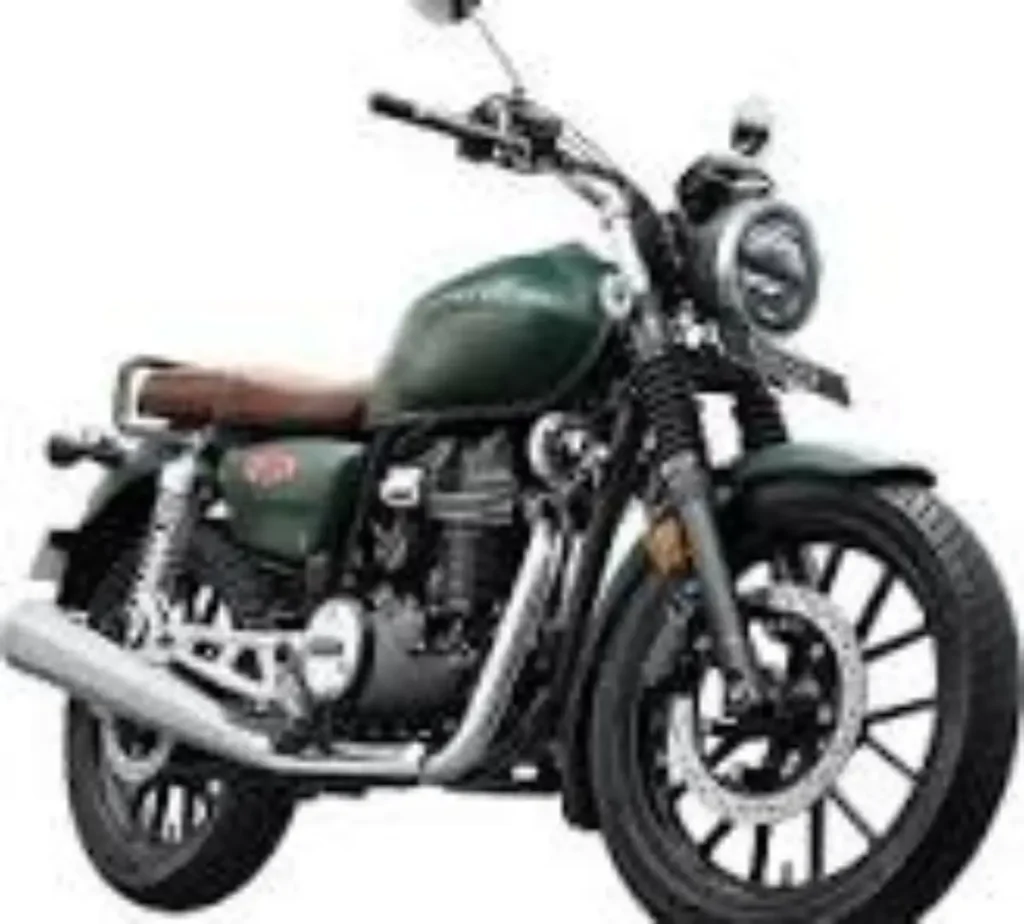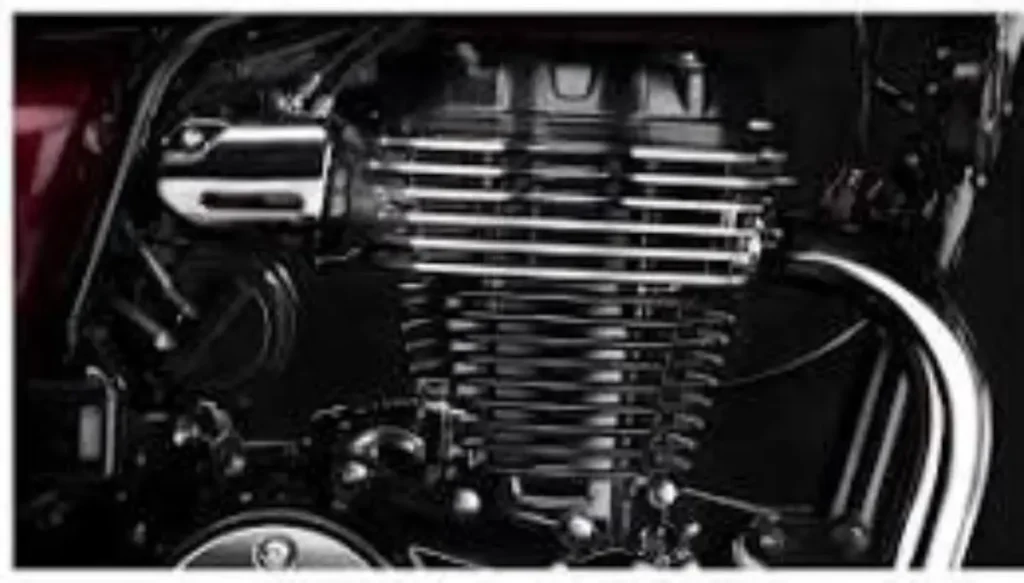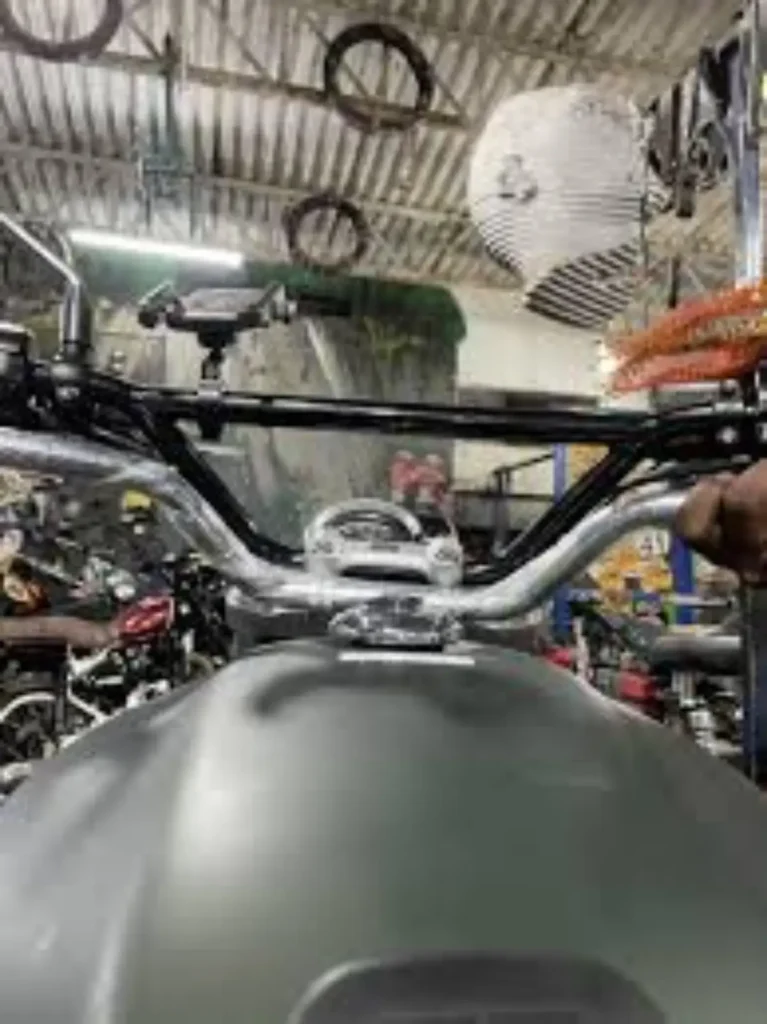Honda H’ness CB350: What a year it hasn’t been, either. There are so many unanticipated things happening in 2020 that making predictions is risky. Consider the Honda H’ness CB350, which was just released. Who would have guessed that the Japanese behemoth would attempt to challenge Royal Enfield’s strength in a market that it created and has dominated for ages? Does the H’ness CB350 possess the necessary qualities to entice the fervent and highly motivated consumer in this market?
Honda H’ness CB350: Styling and features

When designing the Honda H’ness CB350, Honda kept in mind that the appearance of a motorcycle is the most important factor influencing nearly every purchase decision in this market.
First thing that catches your eye is the long, wide fuel tank, adorned with a proudly retro Honda badge from the 1980s that proudly proclaims its Japanese heritage. The period-appropriate appearance is finished with the matte-chrome fenders, round LED headlamp, stepped single-piece seat, and tail lamp, which are all surrounded by always-illuminated turn indicators (a la cars in the USA).
Regarding quality, there are no grievances regarding the paint finish or the materials utilised. The basic DLX version of our test bike has a single-tone paint job, and I was happy to see the metallic black paint shimmer in the afternoon light. The DLX Pro variant adds dual-tone paint, dual horns (with chrome covers), and the Honda Smart Voice Control (HSVC) system with Bluetooth for an additional Rs 5,000. With the help of a special Honda h’ness CB350 app, the rider can pair a smartphone with the small analogue-digital instrument cluster to receive call alerts, read out messages, and play music.
To utilise the feature as intended, though, aftermarket Bluetooth helmet speakers must be installed. Additionally, Honda has included a phone charging port beneath the instrument cluster; however, since it is a contemporary Type-C port, you will need to use an adapter if one end of your charging cable is connected to a traditional USB port.
The Honda H’ness CB350 motorcycle exhibits excellent fit and finish as well as the sturdy, long-lasting feel that one would anticipate from a vehicle bearing the ‘Honda’ badge. Nevertheless, the bike appears disjointed due to the excessive number of distinct finishes, with over four shades of chrome, silver, and matt black visible.
Honda H’ness CB350: Ergonomics
The team responsible for designing the riding posture of the Honda H’ness CB350 appears to have been instructed to ride upright and relaxed, and they have followed the instructions. You won’t need to stretch to reach the pared back handlebar once you’re seated on the wide, flat perch, and the neutral foot peg position allows for comfortable riding all day. The gear shifter’s controls are quite easy to reach, but it is difficult to use because of the heel and toe portion’s slightly elevated angle on both ends. The 5-speed gearbox was simply shifted up and down using the toe side.
If you want to transport a passenger, the seat is sufficiently wide and comfy for short to medium rides. But a full day in the saddle will require periodic breaks because the seat isn’t very supportive for extended periods of time.
Honda H’ness CB350: Engine and performance
Let’s move on to the most crucial aspect of the review, which is the real-world engine performance. But before we do that, let me just say that the exhaust note of the Honda H’ness CB350 is impressively loud and raspy. It has a noticeable thump and sounds quite sporty when you rev it. It is also louder than the RE Meteor 350 and Classic 350.

Honda H’ness CB350 has added its own flavour to the engine’s personality and the gearbox overall, even though it may have benchmarked the exhaust note against its fiercest competitors. Upon cursory inspection of the specification sheet, it can be observed that the 349cc air-cooled single engine produces torque at a low 3,000 rpm of 30Nm, which is more than the competition’s engine. While the performance numbers show how fast this motorcycle is, everything looks promising on paper. 100 kph is reached in 12.69 seconds, while 0 to 60 kph is reached in 4.32 seconds. The H’ness CB350 has an indicated top speed of just over 130 kph and can also reach 120 kph rather easily. Those who are pressed for time will undoubtedly appreciate the motorcycle’s peak performance.
But Honda made the odd choice to gear the bike quite tall, which means that the H’ness CB350 is less tractable at low speeds. Relatively weak bottom end due to the tall overall gearing makes it difficult to stay in fifth below 60–70 kph. The bike does not like to accelerate in second gear from 10-15 km/h, for example, when riding over a tall speed breaker. It’s clear that using this machine quickly requires feeding enough revs and being in the right gear. For those seeking a leisurely and easygoing riding experience, the H’ness CB350 falls short of expectations.
Conversely, there will be a group of people who won’t mind the need to rev this counterbalanced engine, especially after observing how refined it is, even at high speeds. While riding a motorcycle in daily traffic, one must actually work the gearbox; however, the reasonably smooth 5-speed gearbox with an ultra-light slip and assist clutch makes the grind easy to handle. My only complaint is that the clutch lever feels mushy, like a commuter bike, and it’s not always easy to find the bite point, especially when traffic is heavy.
Regarding fuel efficiency, for those who are curious, we didn’t have the bike long enough to subject it to our stringent efficiency test cycle, so that will have
Honda H’ness CB350: Ride and handling

There is nothing particularly noteworthy about Honda’s new cradle frame, telescopic fork, or twin-hydraulic shock absorber setup—these features are common to the majority of modern-classic motorcycles in this segment.
The H’ness CB 350 handles and rides with a neutral and grounded feel. Although it is a little stiffer than the competition at low speeds, the ride quality is still smooth as the speed increases. Additionally, it does a fair job of isolating the occasional pothole. All things considered, the ride setup is tasteful but not luxurious.
With plenty of grip from the MRF Zappers, the H’ness CB350 maintains its intended line when navigating corners. Though it’s not crucial for a bike this kind, a little more front-end communication would have given the rider more courage to push hard.
With this little power, the switchable Honda Selectable Torque Control (HSTC), also known as traction control, is a nice feature to have but not necessary. We were only able to set off the system by forcefully opening the throttle, even on loose gravel roads.
When the brakes are applied, the motorcycle comes to a smooth stop thanks to the Nissin callipers’ biting pressure on the 240mm rear and 310mm front discs. Lever feedback is respectable, and the ABS is calibrated to avoid interfering unless absolutely necessary.
Honda H’ness CB350: Conclusion
The result of closely examining the competition and attempting to outdo them with additional features is the Honda H’ness CB350. Incorporating the smooth engine, stable handling, and the prestige of the Honda emblem, this motorcycle seems like a well-rounded unit.
The H’ness is reasonably priced, with a starting price of Rs 1.85 lakh, but it still costs Rs 10,000 more than the Royal Enfield Meteor 350. Notwithstanding this, a lot of people, whether or not they are Honda enthusiasts, will enjoy the motorcycle for what it is. However, it won’t be available to everyone in the nation because Honda intends to sell it exclusively through the Big Wing Dealership. As of this writing, there are only a few Big Wing dealers in operation; by March 2021, Honda hopes to have 50 showrooms open.
The more pertinent question is: how does this motorcycle stack up against the Royal Enfield Meteor 350? We will address this in a moment.
Honda H’ness CB350 Review On You-Tube
Also Read: Igniting Your Passion for Riding with the Hero HF Deluxe
Share to Others
